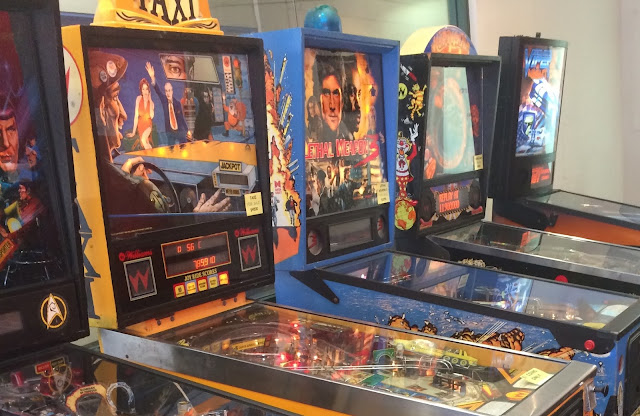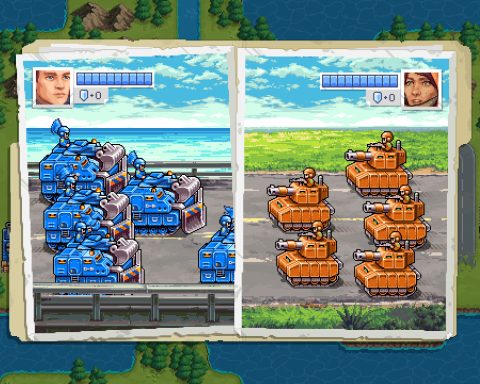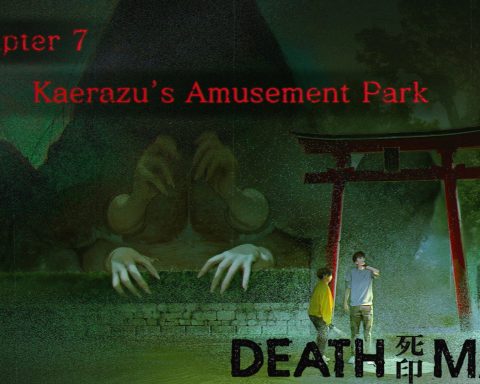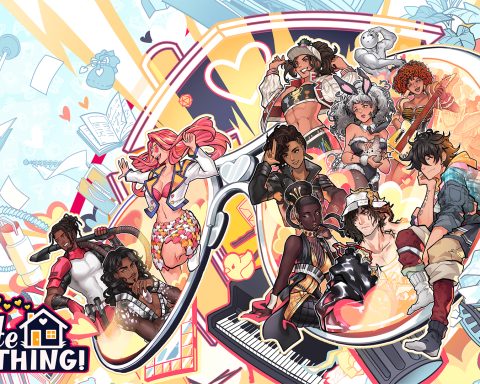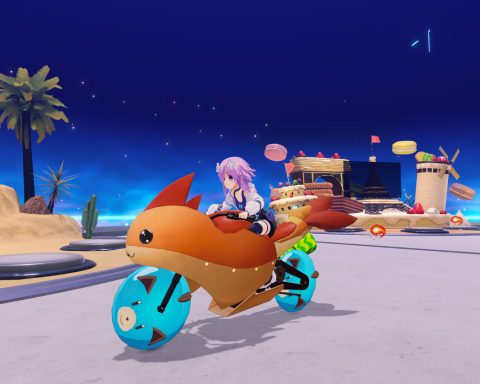Bowral is a town that’s a two hour drive from the CBD of Sydney, Australia, and about forty minutes away from the city’s furthest suburbs. Between the edge of the city and this little country town of around 15,000 people you’ll drive past farms, even smaller villages, and then some more farms.
Related reading: On the magic of rediscovering pinball.
It’s on the way to the Australian capital of Canberra, so it’s a handy rest stop for people making the long drive between Sydney and Canberra. It also attracts its fair share of tourists, as it happens to be the place where the greatest cricketer (and statistically, greatest athlete) of all time, Don Bradman, grew up. In recognition of Bradman’s heitage, the down has developed into a Mecca to the sport of cricket, as it houses the famous Bradman Oval, and the International Cricket Hall of Fame and museum.
But otherwise Bowral is a sleepy little town, and perhaps the last place in Australia that you would expect to find a thriving games parlour featuring over a dozen pinball tables. And yet, right in the heart of the town, there is Skill Shot Pinball Co, one of the largest collections of pinball tables in the country, and perhaps the most compelling anecdotal proof that a game, hobby, or way of life (depending on how addicted you find yourself to it) is making a real resurgence.
There are plenty of statistics to quantify the extent of the comeback that pinball is making. The industry crashed almost completely after its heyday in the 1990’s, and by 2011, just four years ago, the market went from being a competitive one featuring multiple manufacturers to being monopolised by one straggler that had simply outlasted its competition (Stern). But then something happened. People started playing pinball again. Stern reaped the benefits of being able to outlast the crash by watching its sales triple, and then it found itself facing serious competition again, when the upstart Jersey Jack Pinball, founded by an industry veteran, had a major hit with its first major table. Jersey Jack’s very modern The Wizard of Oz is counted by many as one of the finest pinball tables ever produced, years after arcades lined with pinball machines guzzled down dollar coins.
 |
| Classic pinball tables have a very different look to what we see today. |
The renewed interest in pinball flowed through to video games too, where two companies managed to find major success in specialising in creating digital pinball experiences. Zen Studios launched its Zen Pinball franchise, and through the use of licenses such as Marvel, Star Wars, Portal and the Walking Dead, has developed itself a dedicated following of pinball fans. Farsight Studios, meanwhile, has dedicated itself to recreating classic pinball machines with spot-on ball physics, so that those nostalgic for the machines they grew up dumping quarters into could relive their childhood. These tables have been a major success for the developer, too, with dozens now available through The Pinball Arcade platform, and four tables that specifically needed to be Kickstarted by the company were successfully funded to the total tune of over $300,000.
Both digital and physical pinball is enjoying a resurgence in interest that is surprising many almost as much as the startling growth that vinyl records, a format many thought would have been dead and buried by now, has surprised people. But it shouldn’t really be that surprising, according to Skill Shot Pinball Co co-founder, Noe Efira. Both pinball and vinyl share a visceral appeal that digital technology was able to distract people away from temporarily, but could never replace, because the physical game is far more relevant to how we like to interact with things in the real world.
“What is attractive about pinball and vinyl is that they are real things,” Efira said. “It’s so incredibly easy to press play on your MP3 player and enjoy the music track that comes on, but there’s something tactile and experiential in picking up a plastic disc, physically placing it on a player, and placing a needle down on it to make the music happen. You’re more invested in what you’re doing, and I think that applies to the experience of rolling a real ball around a pinball table too.”
This explains why the resurgence of pinball isn’t a simple consequence of nostalgia, too, because the rebirth of the industry has not been exclusively coming from adults rediscovering their love for the machines. As I was interviewing with Efira and his business partner, co-founder Steve Cheers, there were as many children coming into the store to play pinball as adults, and they came complete with real enthusiasm, despite not having a clue what they were looking at.
 |
| The insides of a pinball machines. Wires everywhere. |
“The last machine that was available here in the Southern Highlands was about 15 years ago,” Cheers said. “So many of the kids of the area really have never seen a pinball machine before, and we’ve needed to do a fair bit of education here. When young ones come in I’ll often put a dollar in the machine and show them how to play a machine, and then pass it over to them.
“It’s bright and shiny and noisy, and they love it,” Cheers added. “At first they just bump the ball around, but then the challenge of getting a high score starts to pull them in further.”
Making a modern business out of classic pinball
Unsurprisingly, Skill Shot Pinball Co was created more as an outlet for a favoured hobby than as a pure business opportunity. Cheers had been playing pinball as a child, and after introducing his children to the game, they purchased a table for him as a gift for his 50th birthday. Efira, a friend who shared the love of pinball, started playing on the table as well, and then the two of them realised that there was a potential business opportunity in a shared love for the game.
“We thought to ourselves ‘why don’t we see if we can buy some machines and put them in pubs?’” Cheers said. “So we started buying pinball machines, and before long we had eight machines between my garage and his lounge room, and we needed to work out what to do with them.
“Then, in late January, friends of mine who owned a shop here [in Bowral] moved to a different location, and said they were going to sell this space. I spoke to them and they allowed us to use the space at cost until they could sell it. They were very supportive, and three months later we’re still here. We’ve continued to collect machines, and if we’re here much longer and can find some more machines we’ll be able to be able to start putting machines in pubs and make this location a more permanent one for us.”
 |
| This is the tilt sensor. Bane of the existence of all serious pinball fans! |
Rather than buying new pinball machines which, for a startup business are actually quite expensive (a new table could cost as much as ten times as much as a used one on eBay), Cheers and Efira instead specialise in buying older machines and refurbishing them to make them play like new. That said, it’s not just a cost consideration, Cheers added. “The newer tables are also very complicated. The Wizard of Oz table has over ten different modes and multiple goals to achieve. When we’re trying to re-introduce pinball to people, that’s too much.”
Of course, with pinball being out of favour for so long, refurbishing them can be a challenge in itself. Efira has taken on the role of handling the maintenance of the machines, and while he’s able to do most of the day-to-day work on them, when there’s a more serious issue, there aren’t that many people in Australia who are able to fix the machines, and they tend to be expensive to repair.
Furthermore, broken components can be a nightmare to replace. For example, on one of the tables, there are a couple of plastic monkeys used as decorations. A flying, wayward ball removed the head off one at one point, which Efira counted his lucky stars was reparable, and didn’t need to be replaced.
“Sourcing the little things that go into each table can be difficult,” he said. “The plastics in particular. Every table has lots of ramps, toys and decorations, and often they’re made specifically for the run of that particular machine. It’s very hard to find replacements if we’ve got a broken plastic or something bent out of shape, and it can be terribly difficult to repair.”
What has become easier as pinball has crawled its way back into something resembling the mainstream is the circuitry and wires that sit underneath the machines. “The circuit boards are better than ever,” Efira said. “They’re still expensive, because you’ll need to replace old boards rather than repair them, and they run at about $300 a board. It can cost you up to $2000 just to replace the electronics in the machine. But they last for a long time then.
 |
| For people that are interested in building their own pinball machine, here’s a useful link for you: Click here. |
“Ten years ago you couldn’t get new boards, but now there are manufacturers redoing boards with better designs than ever before. A lot of the original ones have basic design flaws which are very frustrating. For example, with old boards you would often have a battery compartment attached right on it, in order to save high scores. When people don’t change their batteries on their machines the batteries start leaking on to the board, which of course creates damage. New boards don’t do things that way.”
And as with any hobby where you hunt retro or antique devices, the state they’re in when you buy them can vary greatly. Some second hand pinball machines are in immaculate condition, but others are found under an inch of dust, with damaged components and art work on the table itself, Efira added.
Once refurbished, the value of these machines to collectors and pinball fans jumps considerably. One of the most fascinating things about the resurgence of the pinball hobby is that private ownership and purchases now far outstrips commercial businesses buying them. With machines ranging from $500 to $10,000, there is a level of accessibility to private ownership that many people were previously unaware of, and Efira and Cheers, pricing their refurbished machines at between $2,000, and $5,000, are finding a lot of customers surprised by how affordable these machines actually are.
“People don’t always think they could own one of these things,” Efira said. “They have a vague recollection from when they played pinball machines in the arcade as children that they must be these obscenely expensive things that only commercial operators could afford, so when we started putting prices on them in our shop, we could see people come to an awareness that they hadn’t previously considered; that ‘I could have one of these.’ They’re really not that expensive for collectors.”
The new kid on the block
One of the most exciting developments on the commercial side of pinball in recent years is Jersey Jack Pinball. The company is still very new, having been founded in 2011 when industry veteran, Jack Guarnieri, saw an opportunity to provide the incumbent Stern with some competition. However, it hit immediate success, with its first pinball table, Wizard of Oz, becoming a major commercial and critical success, and many would point to is as being singlehandedly responsible for driving a renewed interest in new pinball machine design.
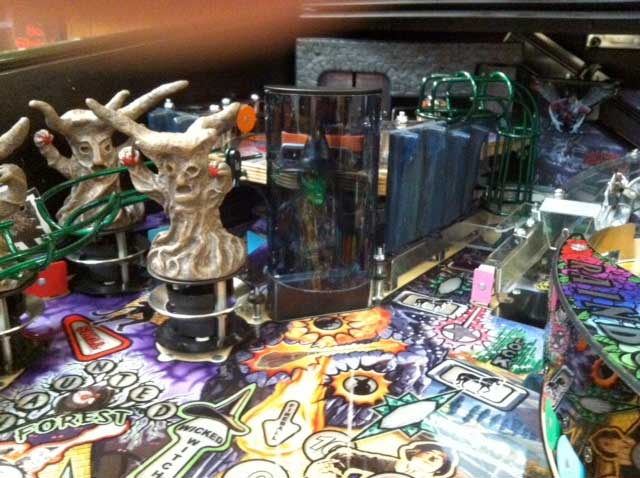 |
| A section of the Wizard of Oz table. |
“In 1999 I started a business to sell commercial arcade games to the consumer marketplace when no one else was doing it on a full-time basis,” Guarnieri said. “But by 2009 no one really wanted to buy new pinball machines that were being created, so we started Jersey Jack Pinball.
“Without even seeing the game, over 1,000 units of our Wizard of Oz machines were pre-ordered and some of our customers needed to wait three years to get their games! That customer base really was what got Jersey Jack Pinball going.
“A big part of the renewed interest in pinball is the innovation and competition that is coming back into the space now. We spent two million dollars developing Wizard of Oz, for example. It’s got playable artwork, RGB-LED lighting, 3.1 audio and a 27” HD LCD monitor in the backbox, as well as a mini LCD in the game’s Crystal Ball.”
Jersey Jack Pinball’s second title, The Hobbit, was another licensed title, but in one of the most subtle, but important developments for the industry, the company’s third game will be an original theme, and is being designed by one of the most experienced and lauded veterans in the industry, Pat Lawlor. For years now pinball manufacturers have relied almost exclusively on popular licenses to help grab the limited consumer attention for pinball to their machines. The most successful recent pinball machines have been based on rock groups such as KISS or AC/DC, or familiar film themes like The Wizard of Oz and The Lord of the Rings, but there have been few modern examples of pinball manufacturers taking risks with original themes. A return to that kind level of creativity is in many ways one of the most important innovations that we’re seeing being brought back into pinball, and one of the healthiest signs that the future is again bright for the industry.
“Regardless of the theme, what’s important in the modern pinball machine is that it’s fun,” Guarnieri said. “That sounds basic, but the game must be fun to play many times, not just once, and it needs to have challenging aspects without being frustrating, and really great rules which compliment and reward the player. For modern tables, it’s also important to have lots of mechanical action and toys that the player interacts with.
 |
| Another look at Wizard of Oz. |
“I love the art, the sound, the mechanical and the electronic married together. The battle between human and machine. Like death and taxes we know you will lose the ball but how far can you get by playing and getting deeper into the game. I love everything about pinball, what’s not to love?” Guarnieri added.
Digital’s role in the rebirth of pinball
Digital pinball games have also been a significant part of the resurgence of interest in pinball. What is most interesting about the dominant digital pinball platforms – Zen Pinball and The Pinball Arcade – is how committed to genuine authenticity they are. Even Zen Pinball, which does make use of the power of the video game format to do things that physical pinball machines could not – for example, the recent Portal Zen Pinball table allows players to flick their ball into one portal, only for it to pop out at the other side of the table, and is certainly impossible for a real pinball table to do that until someone invents teleportation technology – is still, at core, committed to being as recognisable as traditional pinball action.
“We always try and stay true to the elements that make pinball a great game,” Zen Studios Vice President of Publishing, Mel Kirk, said. “There will always be a ball and flippers, though with videogames, we have the freedom to make more interactive and fantasy-based experiences. It is important to still maintain the classic pinball mechanic, but we can explore ways to evolve the game for what players envision today with videogames.
“I would say that pinball has been back for a few years now. It’s all to do with accessibility; when arcades started dying off, it became harder and harder to find pinball games. In today’s environment, pinball is available on just about every conceivable platform; you even can pick up your phone and instantly play pinball. The game itself is all about accessibility in terms of gameplay, as anyone from any skill set can start a game and have a great time. Now that it can be downloaded and played just about everywhere, people have been picking it back up in a major way.”
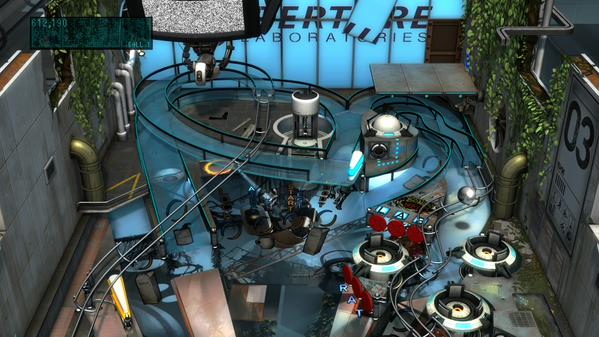 |
| Zen Studios’ Portal table. |
And once they’re hooked on digital pinball, many people find themselves dropping some coins into a physical pinball machine when they see one. The parallels and cross-overs between the two sides of the industry are extensive. For example, one of the really interesting things about digital pinball is that it is every bit as beholden to the lure of licenses and existing franchises as the physical pinball machines that they parallel. While Zen Studio’s tables are all original creations (as opposed to recreations of classic tables, as is Farsight’s modus operandi), if you look at the bulk of Zen Studio’s work, it’s on licenses as far reaching as Plants Vs. Zombie, Ninja Gaiden, Star Wars, Marvel, The Walking Dead, and South Park. The company creates some original tables, but they do seem to be more of a luxury to fit around the licensed work.
“Licenses have always played a big role in pinball, with beloved tables based on properties ranging from The Addams Family to Star Trek,” Kirk said. “Taking the entertainment that people love the most and immortalising it as a pinball table is something that really drives interest in the genre. These brands have massive followings, and allow us to easily focus on their fan base, which is important if you want to stay in business and keep developing new tables. That said, Zen is still focused on original designs as well; in 2015 we will have released four original tables.”
More than anything else, now that pinball is restored to something of its former glory, no one wants to see it start fading back towards obscurity. With technologies such as virtual reality on the horizon, there is, perhaps, potential for all new kinds of innovations to be brought into the industry that could blur the boundaries between physical and digital pinball tables like never before. We’ve got numerous specialists in pinball design and construction in healthy financial shape, both in the game development and physical construction space, and most importantly of all, the industry seems to realise that it needs to continue to invest in innovation of design, while finding new ways to reach out and educate younger generations about what will be a new kind of entertainment for them. The years ahead for pinball could be very, very interesting indeed.
Related reading: A review (and video) of some Zen Pinball tables in action.
“The most important thing for us is to listen to players,” Kirk said. “What do they want, what are they expecting, and how do we give it to them? Can we create exciting experiences time and time again so each table feels new and exciting? Can we better connect players so they feel a sense of community and competition? These are all things that we are taking very seriously on the video game side. As for real world machines, I do think they will have the tougher challenge, but for now, they are definitely rising to the task.”
– Matt S.
Editor-in-Chief
Find me on Twitter: @digitallydownld

